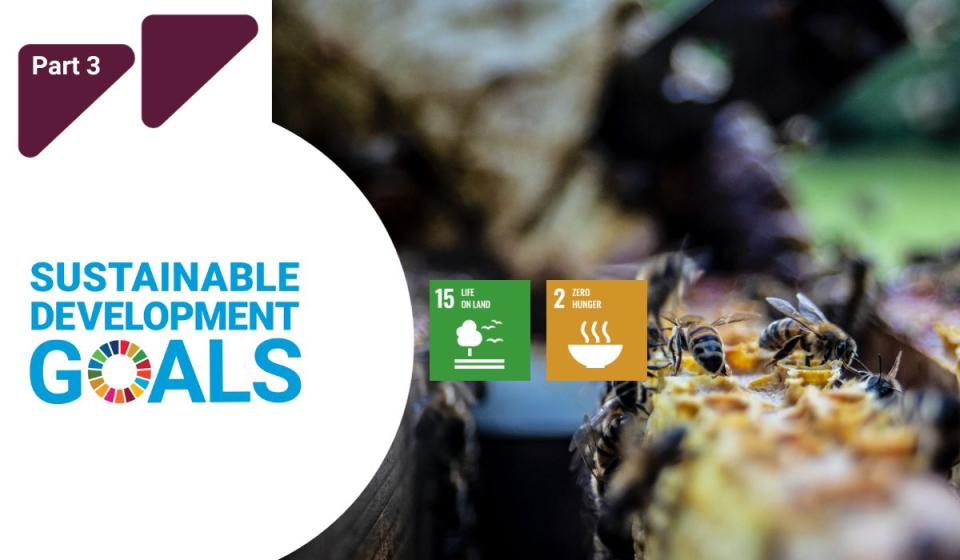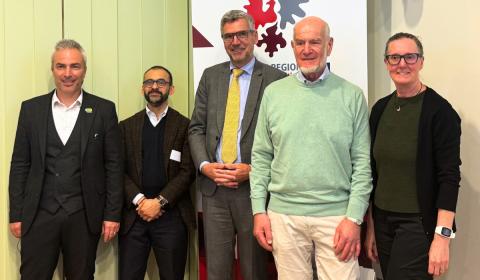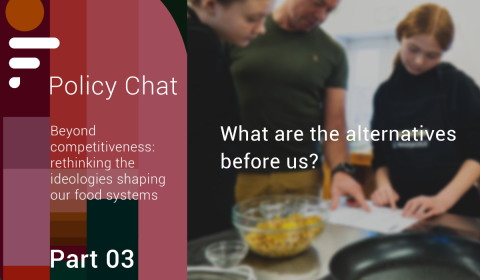
Image: Photo by S N Pattenden on Unsplash
Welcome to the third blog post in our series on sustainable development and food security. In this series, we delve into the intricate relationship between the Sustainable Development Goals (SDGs) and the pressing issue of food security.
While the SDGs encompass a comprehensive framework to tackle global challenges of a world grappling with persistent hunger, they often fall short in adequately emphasizing the need to protect biodiversity to maintain healthy ecosystems and ensure long-term food security. This blog post explores the interconnectedness of biodiversity conservation, food production, and the SDGs, highlighting the urgency of prioritizing biodiversity within the global development agenda.
Biodiversity, the variety of plant and animal species and their habitats, plays a vital role in maintaining healthy ecosystems and supporting food security. Let's examine some specific examples to understand the impact of biodiversity conservation on food security. In regions where pollinators, such as bees and butterflies, are in decline due to habitat destruction and pesticide use, crop yields are negatively affected. For instance, in the United Kingdom, the decline of bees has led to decreased fruit and vegetable production. Similarly, in France, the decline of bird populations has resulted in an increase in the populations of cereal crop pests. This pest outbreak has negatively affected cereal harvests and food production. These examples illustrate how preserving biodiversity is crucial for maintaining robust food production systems.
While the SDGs encompass a wide range of targets and indicators, the specific focus on biodiversity conservation is not adequately emphasized1. SDG 2, "Zero Hunger," primarily addresses the availability, access, and nutrition aspects of food security but falls short in explicitly recognizing the need to protect biodiversity. However, biodiversity conservation is essential for achieving multiple SDGs beyond SDG 15, which directly pertains to biodiversity and ecosystems. Although the overall supply of calories per capita has increased globally, a significant portion of the world's population still suffers from hunger. Paradoxically, hunger persists not because of food scarcity but due to the unequal distribution of resources and the displacement of peasant subsistence producers. Agribusinesses have driven these producers off their land, pushing them into impoverished urban areas with limited access to nutritious food2. This displacement often occurs as a result of land degradation or conversion of natural habitats for industrial agriculture. These actions not only perpetuate inequality but also contribute to the loss of biodiversity and disrupt ecological balance, affecting food production and availability. Moreover, the prevailing profit-driven, agribusiness-dominated food system encourages the consumption of unhealthy ultra-processed foods, further exacerbating global health challenges.
Preserving biodiversity is not only crucial for food security but also for mitigating climate change and achieving sustainable development. Biodiverse ecosystems act as carbon sinks, sequestering and storing carbon dioxide, thereby helping to regulate the global climate. Moreover, biodiversity provides nature-based solutions to climate change adaptation, including resilient agricultural practices and the protection of natural resources. Recognizing the synergies between biodiversity conservation and climate action is pivotal for a holistic and effective approach to sustainable development.
It is important to prioritize biodiversity conservation within the SDG framework and develop specific targets and indicators to measure progress3. Governments, international organizations, and civil society should work together to integrate biodiversity conservation into policies and frameworks, promoting sustainable agriculture practices, protected areas, and the sustainable use of natural resources. Strengthening legal frameworks to protect native seeds, empowering local farmers, and ensuring agricultural diversity are critical steps towards achieving food security and biodiversity conservation.
Furthermore, education and awareness campaigns should go beyond raising general awareness and focus on empowering individuals and communities to take meaningful actions. Providing practical guidance, resources, and incentives can encourage sustainable practices that support biodiversity and food security. Collaboration between researchers, practitioners, and communities can facilitate the sharing of knowledge, experiences, and best practices, fostering innovation and adaptation at the local level. While the SDGs provide a valuable framework for addressing global challenges, there are gaps and limitations that need to be addressed regarding the preservation of biodiversity and its impact on food security. Recognizing the interconnectedness of biodiversity, food security, and sustainable development is key to achieving the SDGs and ensuring a healthy and equitable world for all.
References
1 Krauss, J. E. (2022). Unpacking SDG 15, its targets and indicators: tracing ideas of conservation. Globalizations, 19(8), 1179-1194.
2 Carte, L., Schmook, B., Radel, C., & Johnson, R. (2019). The slow displacement of smallholder farming families: Land, hunger, and labor migration in Nicaragua and Guatemala. Land, 8(6), 89.
RUBEN, R., SCHULPEN, L., & ELBERS, W. (2023). From Peasant Resistance to Agri-Food System Transformation. n M e ijl & W.
3 Huan, Y., & Zhu, X. (2023). Interactions among sustainable development goal 15 (life on land) and other sustainable development goals: Knowledge for identifying global conservation actions. Sustainable Development, 31(1), 321-333.


